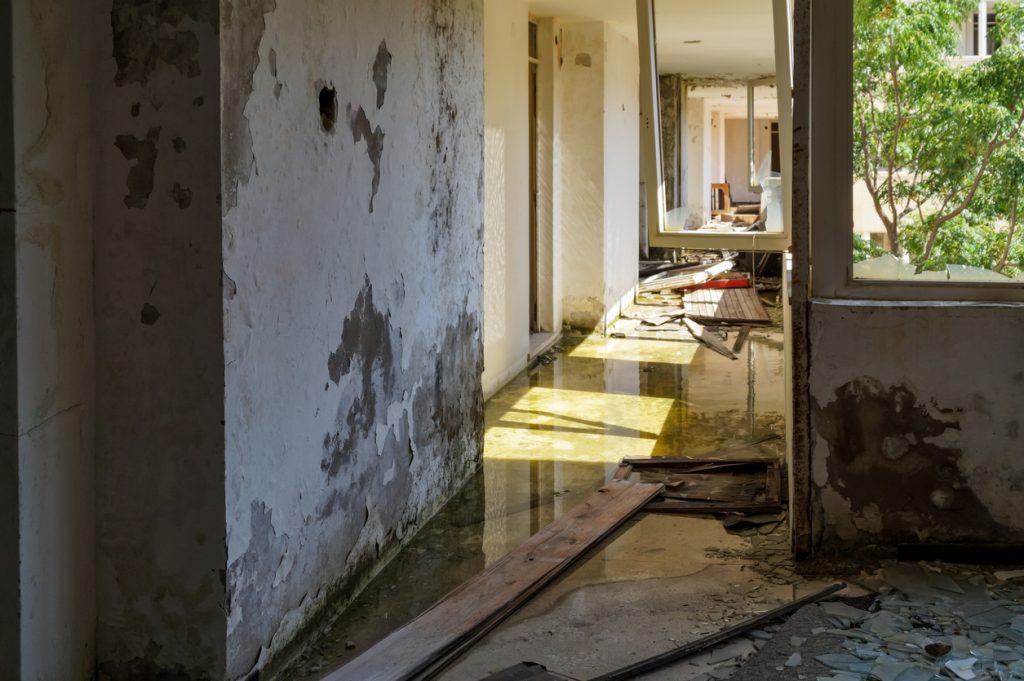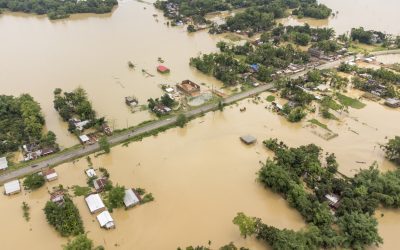How Claims Affect Your Flood Insurance Texas Cost
Flooding in Texas is no longer a rare event. With hurricanes, tropical storms, and sudden rain surges happening more frequently, flood insurance is becoming a must-have for homeowners across the state. But here’s what many Texans don’t realize—filing a flood insurance claim can significantly impact your future premiums. Understanding how the flood insurance Texas cost changes after a claim, and how a water damage insurance adjuster factors into the process, can help you protect both your property and your wallet.
This blog explains how claims affect your flood insurance premiums, what influences pricing, and what you can do to lower costs over time.
Why Flood Insurance Is Essential in Texas
Texas ranks among the top states for flood-related disasters. Cities like Houston, Dallas, Austin, and coastal regions see repeated flood events that damage homes, vehicles, and infrastructure. While homeowners insurance covers fire and theft, it doesn’t include flood damage. That’s why separate flood insurance—offered through the National Flood Insurance Program (NFIP) or private insurers—is critical.
Flood insurance covers:
- Structural damage (walls, flooring, electrical systems)
- Personal belongings and appliances
- Temporary living expenses (in some private policies)
- Mold remediation and cleanup (with limits)
Without this coverage, even minor water damage could result in thousands of dollars in out-of-pocket costs.
Reference: FEMA Flood Insurance Program
Factors That Determine Flood Insurance Texas Cost
Before diving into how claims affect your premium, it helps to understand what determines your flood insurance rate in Texas.
Key pricing factors include:
- Flood zone classification: FEMA flood maps rate areas from high-risk (Zone AE) to low-risk (Zone X).
- Elevation: Homes built above Base Flood Elevation (BFE) typically enjoy lower rates.
- Type of foundation: Slab-on-grade homes may be charged more than elevated homes.
- Property location: Proximity to rivers, lakes, or coastal zones increases risk.
- Policy type: Whether it’s an NFIP or private flood insurance policy.
- Claims history: Properties with previous flood damage often face higher premiums.
As of 2021, FEMA introduced Risk Rating 2.0, a new system that calculates rates based on individual property risk, not just zone classification. This means your home’s unique risk profile—including past claims—now matters more than ever.
Source: FEMA Risk Rating 2.0
How Claims Affect Your Flood Insurance Premiums
Here’s the key truth: every flood insurance claim you file becomes part of your property’s claims history—even if you didn’t own the home at the time. This can raise your rates or make coverage more difficult to obtain.
Claim history and rate hikes
- One minor claim might have minimal impact.
- Multiple claims—especially for large payouts—can trigger a classification known as a Repetitive Loss Property (RLP) or Severe Repetitive Loss (SRL).
- These classifications almost always result in substantial premium increases or reduced policy options.
A property tagged as SRL has:
- At least four separate flood claim payments of $5,000+ each
- Or two or more claim payments exceeding the building’s value
These designations not only affect your premiums but may also require you to take mitigation actions like elevating your home to remain eligible for NFIP coverage.
Role of a Water Damage Insurance Adjuster in the Claims Process
When you file a flood claim, a water damage insurance adjuster plays a critical role in determining your payout. These adjusters inspect the damage, assess repair costs, and report to the insurer. But here’s where it gets tricky—underreporting or accepting a low estimate might protect your premiums short term, but it can hurt your recovery. On the flip side, maximizing a claim without strong documentation may trigger steep future premium hikes.
Why proper documentation matters
Working with a qualified, independent water damage insurance adjuster helps you:
- Accurately document all visible and hidden damage
- Ensure mold, foundation, and electrical issues are included
- Justify a fair and complete settlement
- Avoid repeated back-and-forth with the insurer
The goal is balance—get fairly compensated for actual damage without inflating the claim in ways that red-flag your property.
Can You Lower Your Flood Insurance Costs After Filing a Claim?
Yes, but it requires proactive steps. Filing a claim doesn’t mean you’re stuck with sky-high rates forever.
Here’s how to manage or reduce future flood insurance costs:
- Invest in flood mitigation
- Elevate HVAC systems, electrical panels, and appliances
- Install flood vents or elevate your entire home (if feasible)
- Apply for FEMA grant programs for repetitive loss mitigation
- Request a Letter of Map Amendment (LOMA)
- If your property is wrongly classified in a high-risk zone, submit elevation data to FEMA to lower your flood zone rating.
- Shop for private flood insurance
- Some private insurers offer lower rates or broader coverage than the NFIP, especially for properties without SRL tags.
- Increase your deductible
- A higher deductible lowers your premium but increases out-of-pocket costs during a claim. Consider if your home is low-risk.
- Don’t file small claims
- For minor damage (under $5,000), consider self-paying to avoid adding a new claim to your history.
Real-World Example: Flood Claims and Cost Impact
Consider a home in Houston’s Zone AE area:
- Before claims: $700/year flood insurance through NFIP
- After two claims ($8,000 and $12,000): reclassified as Severe Repetitive Loss
- New premium: $2,900/year under Risk Rating 2.0
- Mitigation completed (home elevated 2 feet above BFE): new premium drops to $1,400/year
This demonstrates how proactive changes—even after claims—can still reduce long-term costs.
What to Ask Before Filing a Flood Claim in Texas
Not every situation requires a formal insurance claim. Here are questions to consider:
- Is the damage above my deductible?
- Will this be the second or third claim for my property?
- Have I documented the damage thoroughly (photos, receipts, professional inspection)?
- Am I prepared for my premium to rise next renewal cycle?
- Is this my forever home, or am I planning to sell in a few years?
Talking to a public adjuster or water damage insurance adjuster before filing can help you answer these questions accurately.
FAQ: Flood Insurance Texas Cost
Does flood insurance cost more after filing a claim in Texas?
Answer: Yes. Filing a flood claim can increase your premiums, especially if it’s your second or third claim. Properties may also be classified as Repetitive Loss or Severe Repetitive Loss, which significantly raises costs.
How much is flood insurance in Texas?
Answer: Costs vary widely based on location, flood zone, elevation, and claim history. Average NFIP policies in Texas range from $700 to $1,200 annually, but high-risk or SRL properties can exceed $3,000+ per year.
Can I switch to private flood insurance after filing a claim?
Answer: Yes. Some private insurers accept customers with prior claims, but coverage terms and rates may vary. Always compare NFIP and private options.
What is a water damage insurance adjuster?
Answer: A water damage insurance adjuster is a professional who evaluates property damage after flooding or leaks. They estimate repair costs and help determine your claim value. Hiring an independent adjuster can protect your interests.
Is it worth filing a small flood insurance claim?
Answer: Not always. If the damage is just above your deductible, it might be smarter to pay out-of-pocket to avoid higher premiums in the future. Discuss with an expert first.
How long does a flood insurance claim stay on my record?
Answer: Flood claims typically stay on your property’s insurance record indefinitely. NFIP and private insurers consider your property’s entire claim history when pricing future policies.
Final Thoughts: Protect Your Property, Protect Your Premium
Flood insurance is critical in Texas, but every claim comes with consequences. Before you file, understand how it could affect your future costs and coverage options. Involving a water damage insurance adjuster or public adjuster ensures your documentation is solid and your settlement is fair.
By investing in mitigation, carefully choosing when to file, and exploring all policy options, you can keep your flood insurance Texas cost under control—without sacrificing protection.
Need Help Navigating a Flood Damage Claim?
If your Texas property has suffered water damage and you’re unsure how to proceed, let professionals guide you. Visit Flood Damage Texas to understand your rights and options. For personalized support with documentation, claims, and insurer negotiations, contact Flood Damage Help today.



